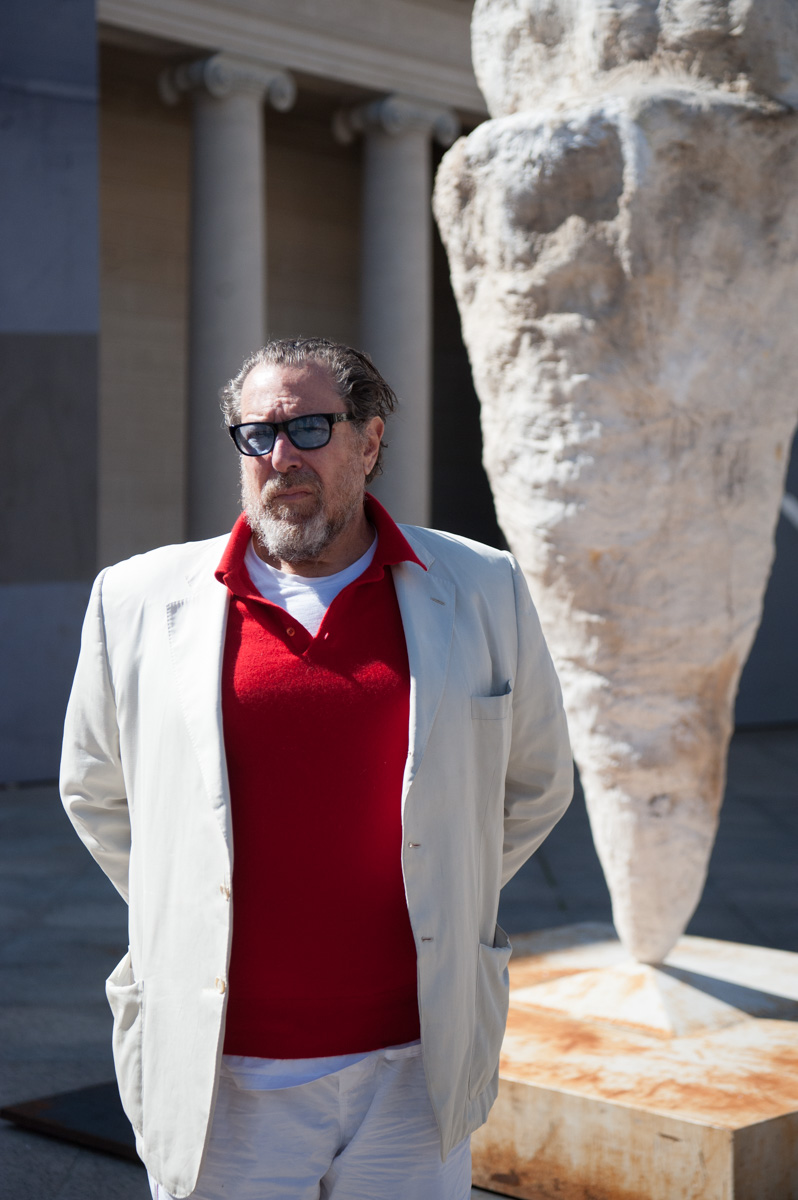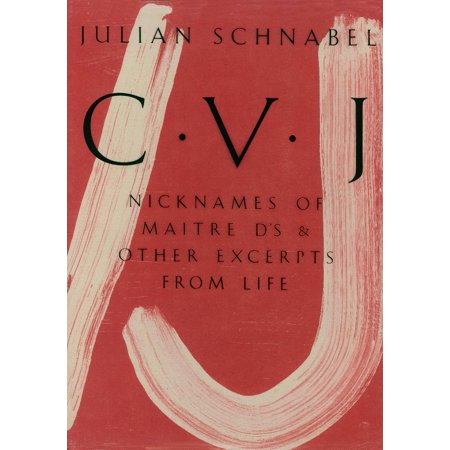PHOTOGRAPHY Lauri Levenfeld
ART DIRECTION Juliet Belkin
It is rare person who can work in several distinct creative rounds and be successful in each, but Julian Schnabel is one of those artists. Schnabel's work has embraced photographs, sculpture design and more painting. He's painted on surfaces ranging from velvet and metal to the sail of a boat, abstracts and portraits. They have a raw energy, many are huge, as grand as movie screen and that's fitting since Julian Schnabel added film making to his working life in 1996, films like "Before nights fall" or "The Diving Bell and The Butterfly" which brought him best director award at Cannes movie festival and Golden Globe award.
Juliet: I'd love to hear from the artist himself what this work here at Legion of Honor means to you?
Julian: Max Hollein is the director of The Legion of Honor he came to me with an idea. He's been very supportive of my work and he did an exhibition for me at another museum. I've known him for some time. He asked me if I'd like to do something in particular, regarding the building, so I came out to San Francisco, took a look at the building and decided to do what you now see at The Legion of Honor.
Juliet: Why are they so incredibly tall?
Julian: I looked at the size of the courtyard and decided what size my work should be. The columns have a particular, neoclassical look and paintings are made out of material that cover fruit market and jungles in Mexico, so there is kind of , not necessarily a contradiction but certainly a juxtaposition of what paintings do you put outside in a place like that. So this is my version of what I would do. The height of the columns and the scale of the courtyard dictated the size of those painting for me.
Juliet: What is your creative process like?
Julian: There are three paintings that are in one room and there is a white mark on all of them, so there is kind of intervention that occurs. Perhaps people don't realized when they are drawing on a piece of paper, they are intervening in some way, but the white seems to be an emblem of that. The notion of temporality or something happen in one moment and then you feel like something is added at another moment and carries onto the paintings in the other room, paintings of goats. What I am trying to say is that there is a dialogue between all the works from the outside to the inside, from room to room, images appear, disappear
Juliet: Your work has involved the use of numerous varied materials, from tablecloths to dinner plates. How would you characterize your working process?
Julian: When I was younger I was worried if the last painting that I made didn’t look anything like the one that came before it. I realized a while after that it was a blessing—even though some people who liked work of mine were dismayed when my work didn’t repeat itself. But it was never my intention to do that, to be a chameleon. Every work was an experiment.
Juliet: What or who inspires you?
Julian: Where are you from originally?
Juliet: I am Armenian.
Julian calls for his assistant to bring the book he published.
Julian opens a page and starts reading about Vahakn Arslanian - an artist, deaf from birth and fascinated by the chaotic beauty of shattered glass. Vahakn's childhood fascination with breaking glass caught the attention of artist Julian Schnabel, who recognized the logic and inspiration behind the obsession. Schnabel went on to devote the introduction of his 1987 monograph C.V.J. to his impressions of the young boy's raw artistic instinct. In 1991, Schnabel narrated the documentary "Vahakn: Portrait of an Artist," a revealing look at Arslanian's approach to art and its relation to his deafness and his perspective on the city around him.
Vahakn Arslanian found in his art both a route for his imaginative vision and a means of exploring the equilibrium between destruction and creation. His work frequently employs glass – sometimes broken, sometimes intact – as well as found or acquired objects like antique window sashes and hardware, massive airliner cockpit windows, lightbulbs, and even jet-engine fans. The images he places in and on the spaces thus created depict his vision of beauty and absurdity: a bird with a subway car for a beak, a candle with too many flames, a flock of tiny Boeing jets converging on the vortex at the center of a shattered window.
Vahakn’s work has been shown by Vito Schnabel at exhibitions in London (Mr. Big Ben), in New York City (Holy Heavenly, Ghost of a Plane, and Jesus Loves Captain Sully Sullenberger), and in Switzerland at the 2011 St. Moritz Art Masters. His collaboration with Julian Schnabel, “The Ones You Didn’t Write – The Maybach Car,” was displayed on the Grand Canal during the Venice Biennale.
Juliet: Could you live without art?
Julian: If I couldn't paint, I think I would be a problem. I would definitely be a problem to the people who have to put up with me, live with me, deal with me. I wouldn't know what to do with myself. I would go surfing I guess and live in the jungle or something like that. You know, obviously I’m not perfect but the thing I am best at is painting.









